Camino de Santiago - French Way - Stage 29, page 1 - Samos to Portomarín
Total distance - 34.4 km
To leave Samos continue along the main road towards Sarria for about 2 kilometres and through the small hamlet of Tequín. If you want a quieter route take the minor road marked Pascais, this leads you to the hamlet of Hospital where the other road through San Xil meets this one. Alternatively you can just stay on the main road until you reach Sarria.
Follow the marked route down country lanes passing the 12th century church of Santa Eulalia de Pascais and another small chapel before crossing over a couple of bridges and a bit of an up and down track until you enter the village of Hospital, where centuries ago there used to be a pilgrim hospital. From here follow the track through the villages of San Mamede del Camino where there is an albergue, San Pedro, Carballal and Vigo de Sarria before reaching the town of Sarria after approximately 4.5 kilometres.
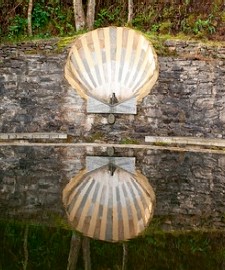
As mentioned at the T-junction in Triacastela there was an alternative route to Sarria that went through San Xil. If you choose this route take a right at the T-junction in Triacastela taking the minor road sign posted to San Xil. After about 1.5 kilometres take a green lane towards the hamlet of A Balsa and then cross the river, pass the ermita and walk through the woods. You will pass by an unusual scallop shaped fountain and picnic area before you reach another T-junction where you take a left into San Xil.
Once back on the Camino after about 2 kilometres you come to Alto de Riocabo. The path then goes down the side of the valley and through the hamlets of O Real, Montan, Fontearcuda and the slightly odd sounding Zoo Mondarega. Just after Zoo Mondarega take a left down a track towards Furela where there is a small chapel la Capilla San Roque, and then follow the lane through to the hamlet of Pintín where there is a hostal. 8 kilometres out from Triacastela you eventually arrive at the village of Calvor. There is a small albergue here plus just before reaching the village you will have passed a bar that does good food such as Caldo Galego, a hearty meal of various meats, vegetables, potatoes and cabbage, lovely on a cold day.
Just through the village you go down a road sign posted Aguiada where there is a private hostel and a café that does food and then through to the Hamlet of Hospital. From here follow the route as described earlier through to Sarria.
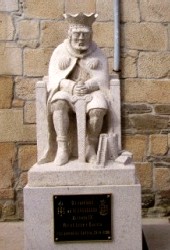
Sarria has been inhabited for many thousands of years both by the Celts and the Romans but the town was founded at the end of the 12th century by Alfonso IX, the last king of León and he named the village Vilanova de Sarria. He unfortunately died here in 1230 from a serious illness that he contracted as he was undertaking the pilgrimage to Santiago. A statue of the king can be seen near the police station.
On first inspection Sarria doesn't appear to have much to offer for the tourist, unless you like antiques that is. It looks pretty much like many other Spanish towns, heavily built up along a very busy main street but you just need to look beyond that and head towards the river. Most of the buildings linked to the Camino can be found behind the main street on the hill where the old town used to be.
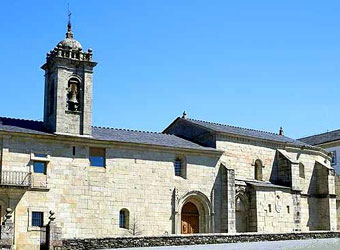
Located on the Camino itself the Monasterio de la Magdalena is said to have been founded by a couple of Italian friars who passed this way on their pilgrimage to Santiago. They asked the Bishop of Lugo if he would grant them permission to look after the pilgrims and this he did and they administered this help from the Ermita de San Blas de Vilanova.
The Italian friars belonged to an order called Frailes de la Penitencia de los Venerables Mártires de Cristo or roughly translated Friars of the Penance of the Venerable Martyrs of Christ who maintained control over the monastery until 1568 when they disappeared. An Augustinian order took over the maintenance of the Hospital de San Roque, but the monastery was eventually abandoned altogether in the late 18th century when the Desamortización occurred, the Spanish version of the dissolution of the monasteries. Over the next century it was used as a prison, a firewood warehouse, a headquarters and eventually left to rack and ruin. However in 1896 Bishop Murúa gives the building to the Orden de la Merced or Order of Mercy who begin to restore and extend the monastery. The monastery is now dedicated to the education of the monks that reside there. They still provide spiritual guidance to the pilgrims that pass through their doors.
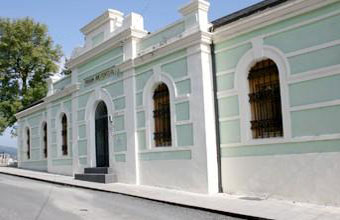
Just before reaching the Monasterio de la Magdalena you will have passed a green and white building that between 1930 and 1950 was the prison or Prisión Preventativa where criminals will have been held whilst awaiting trial. It is now used as a museum by the local building college.
Like so many of the town and villages along the Camino Sarria too had its fair share of pilgrim hospitals boasting at least 7 at one point. The Juzgado or courthouse now occupies the building that once housed the pilgrim Hospital of San Antón Abade.
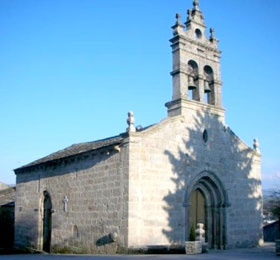 It was built in 1592 under the orders of Don Dionís de Castro y Portugal who was cleric to the noble family of Condal de Lemos, who provided money for its upkeep. The hospital would welcome the pilgrims who were returning from Santiago complete with their Compestelana and would offer them a bed, heat and for some peculiar reason, the services of a surgeon. The hospital was still in operation up until 1821.
It was built in 1592 under the orders of Don Dionís de Castro y Portugal who was cleric to the noble family of Condal de Lemos, who provided money for its upkeep. The hospital would welcome the pilgrims who were returning from Santiago complete with their Compestelana and would offer them a bed, heat and for some peculiar reason, the services of a surgeon. The hospital was still in operation up until 1821.
Next to the courthouse and underneath the Torre de la Fortaleza is the mainly 13th century Iglesia San Salvador, the belfry is a later 19th century addition. Due to its proximity to the former Hospital of Santo Antón it may well have been the church for the hospital.

